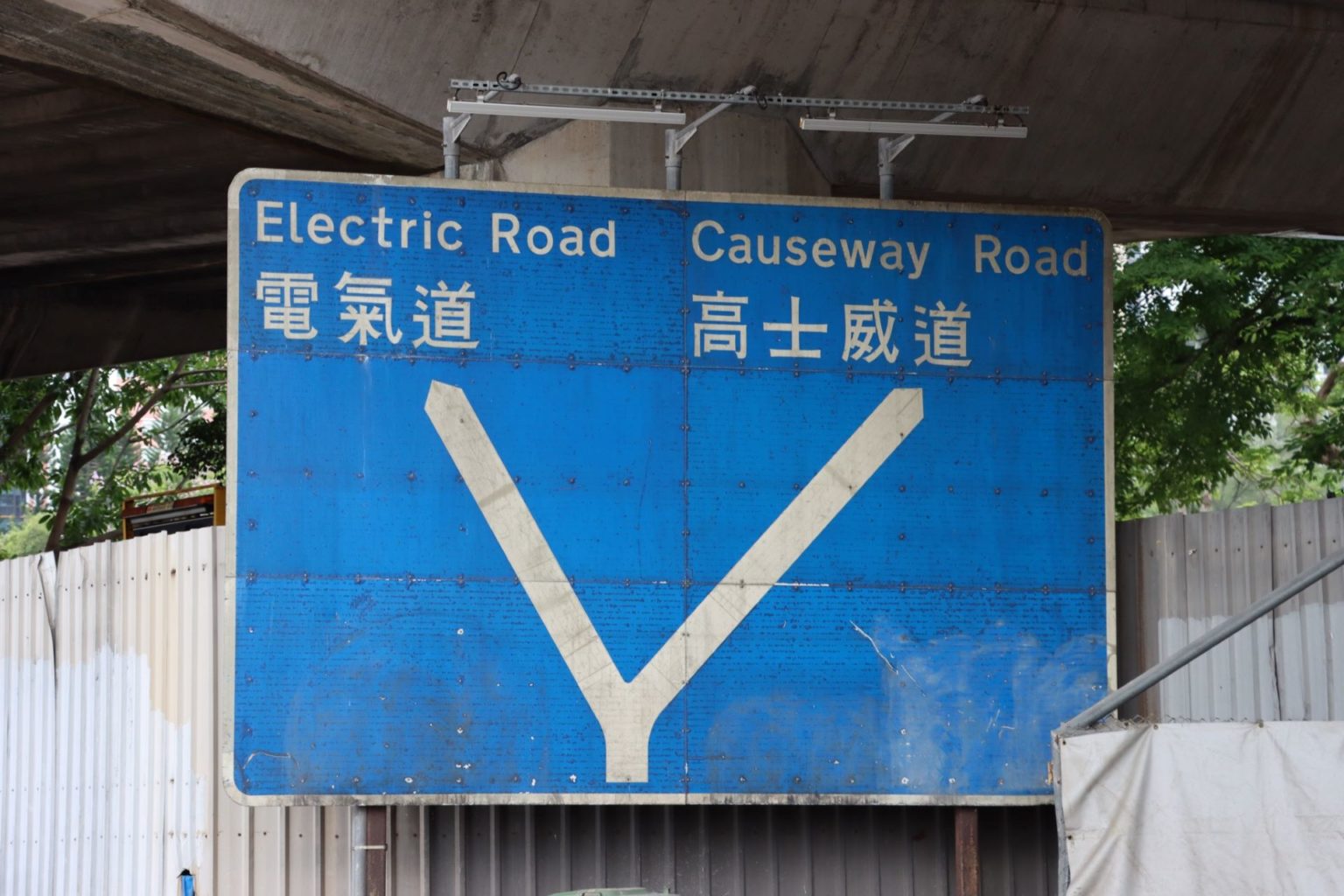The unique Chinese characters on Hong Kong’s street signs will be immortalised in a font, thanks to a group of Hongkongers. As part of a six-year-long initiative, members of the Road Research Society have meticulously located, documented, and digitised characters on around 600 signs across the city that were made by prison inmates between the 1970s and 1990s to convert them into a font called Prison Gothic.
The group is headed by Gary Yau, who has been fascinated by Hong Kong’s road signs since he was a child. The initiative, called Prison Gothic Revival Programme, aims to “record characters shown on the road signs manufactured by workers from prisons before computerisation”.
Many of these pre-1997 signs, which were manually designed and handmade, are slowly being replaced by urban renewal projects, traffic diversions and new road openings, and the group wanted to go beyond photographing them for posterity. They therefore decided to digitise characters and create a computerised font. In the process, they managed to “expand the base of some 500 words extracted from road signs into 8,000 words sufficient for day-to-day use.”
“Some of these words are miswritten, but they reflect authentic old writing methods and the change of society as such. The old typefaces may include defects from the road signs being handcrafted, but these imperfections are unique to Hong Kong too,” according to a video posted on the Road Research Society’s Facebook page.

(© Road Research Society via Facebook)
The challenge, however, was that most of the characters on these signs are related to traffic and place names. For instance, common characters used for ‘you’ (你) and ‘me’ (我)’ are missing, so the existing characters had to be reorganized to create enough of them for everyday use.
Another consideration was to ensure that the new font’s characters have the same feel as the originals on the signs and not the standardised look of the computerised versions on new signs. Some of these unique characteristics include the use of Chinese characters to denote numbers on the old signs, as opposed to Arabic numerals used on newer signs. Other features include their varying characters and line thicknesses because they were not machine-cut or designed using computers, but hand-drawn, carved out and assembled by inmates.

(© Road Research Society via Facebook)
The group has also sought to include the original characters in signs altered by the government. One example is a sign for the Yuen Long Highway, which was partially covered because of a reported character inaccuracy. The so-called error concerned the accuracy of “Long” (朗), which resulted in the authorities covering it up. Even though it was subsequently ruled that “Long” was not incorrectly written, the covering has not been removed.
In July, the Road Research Society launched a crowdfunding initiative to raise $700,000 for the last phase of the Prison Gothic Revival Programme. The society plans to release the medium version of the font by November 2022 so that people can use them in documents, presentations, graphic designs and videos.
Header image credits: Road Research Society via Facebook




